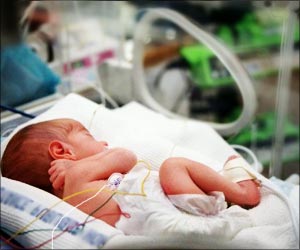A new study by Harvard School of Public Health (HSPH) researchers has shown just how important it is to curb sex trafficking, by finding that 38 percent girls and women sex-trafficked
A new study by Harvard School of Public Health (HSPH) researchers has shown just how important it is to curb sex trafficking, by finding that 38 percent girls and women sex-trafficked from Nepal to India and then repatriated were HIV positive.
As a part of the study, lead author Jay Silverman, Associate Professor of Society, Human Development, and Health at HSPH and colleagues reviewed the medical documentation and case records of 287 girls and women who had been sex-trafficked from Nepal to India between the years 1997 and 2005.All had been repatriated back to Nepal and had received rehabilitative services.
The study found that not only were 38 percent of them HIV positive, but that the infection rate exceeded 60 percent among girls forced into prostitution prior to age 15 years.
They noted that one in seven of the study's participants had been trafficked into sexual servitude prior to this young age.
Silverman said that the high HIV rates showed that sex trafficking may be a major factor in the spread and maintenance of the disease in India, and her neighbouring countries.
"The high rates of HIV we have documented support concerns that sex trafficking may be a significant factor in both maintaining the HIV epidemic in India and in the expansion of this epidemic to its lower-prevalence neighbours," said Silverman.
HIV risk was also associated with being trafficked specifically to Mumbai, India, and with longer durations in brothels.
"HIV infection has been seen as perhaps the most critical health consequence of sex trafficking, but sex-trafficked girls and women are rarely studied - leaving the prevalence of HIV and other health issues among this highly vulnerable population little understood," said Silverman.
"This study sheds new light on infection rates among a sex-trafficked population and exposes both the tragic existence of the youngest victims and the dire health consequences of this crime."
Silverman and his team suggest several likely explanations for the observed high risk for HIV infection among the youngest trafficked girls.
Previous research on male brothel clients in India suggests that the men who visit brothels prefer very young girls as they think that sex with them will not lead to HIV and other infection. Along with this is the myth that sex with a virgin will cure such illnesses.
As a result of client demand and of the relatively high profits earned from prostituting these very young girls, brothel owners take steps to keep them in captivity for longer periods of time.
The HSPH team found that girls trafficked under age 15 were more likely to be held in brothels for a year or longer, and that the risk of HIV infection increased by two percent for every additional month of brothel detention.
Silverman and his team suggest that the prevention of sex trafficking and the intervention into the practice should be seen as a critical aspect of preventing both the spread of HIV/AIDS and reducing a widespread and violent human rights violation.
The authors assert that few resources have been devoted to the prevention of sex trafficking, particularly in relation to the large estimated numbers of affected individuals and to the public health consequences.
In particular, the authors specify that approaches oriented to male clientele that reduce the demand for sex from young prostituted girls must be emphasized.
According to the U.S. Department of State, an estimated 150,000 women and girls are trafficked annually within and across South Asia, with the majority destined for major Indian cities, according to a report by the
Congressional Research Service.
The study is published in the August 1, 2007, issue of the Journal of the American Medical Association (JAMA).
Source-ANI
LIN/B











